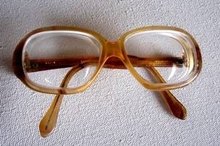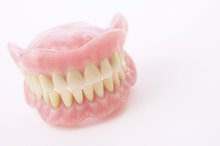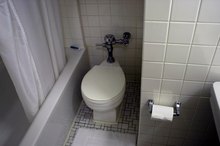What does fact checked mean?
At Healthfully, we strive to deliver objective content that is accurate and up-to-date. Our team periodically reviews articles in order to ensure content quality. The sources cited below consist of evidence from peer-reviewed journals, prominent medical organizations, academic associations, and government data.
- Cleaning Calcium Deposits from Soft Contact Lenses
- Cleaning Calcium Deposits from Soft Contact Lenses
The information contained on this site is for informational purposes only, and should not be used as a substitute for the advice of a professional health care provider. Please check with the appropriate physician regarding health questions and concerns. Although we strive to deliver accurate and up-to-date information, no guarantee to that effect is made.
How to Get Calcium Deposits Off Contact Lenses
People who suffer calcium deposits in their contact lenses are typically advised to wear daily disposable lenses 23. However, many people either cannot wear these types of lenses or would prefer not to. Daily wear lens users who reuse lenses should act immediately to remove any calcium deposits on their lenses 23. If the calcium is permitted to remain on the lens for too long, it will become too difficult to remove. Proactive treatment and the assistance of your optometrist are the best ways to treat calcium deposits on your contact lenses and maintain healthy eyes 23.
Remove your contact lenses immediately when you feel a scratching or irritation on your eyes. These are potential signs of calcium deposits.
How to Remove a Torn Contact Lens
Learn More
Examine your contact lenses closely, looking for tiny, uneven spots on the surface of the lens 3. If these spots do not appear to move even when disturbed, they might be calcium deposits.
Make a small bath of pure white vinegar. Do not use your normal lens cleaning kit, as the vinegar might sting your eyes if you do not clean it out thoroughly. A small bottle cap or lid may be used, but any container that can hold your lens and a small amount of vinegar will work. Special enzyme tablets for dissolving calcium can also be used in place of vinegar.
How to Remove Scratches on Polycarbonate Lenses
Learn More
Soak your lenses in the white vinegar or enzyme solution for 20 to 40 minutes.
Examine your lenses for any remaining calcium deposits 2. If there are still uneven spots, repeat steps 3 and 4. If spots remain after a repetition, the calcium is either too abundant and solid to remove, or the spots are something other than calcium.
Clean your lenses as normal with your saline solution, making sure to get rid of any lingering vinegar or enzymes. Soaking your lenses overnight in your cleaning solution is best.
Ask your optometrist for advice if calcium deposits persist or keep recurring. He can recommend other types of lenses or different cleaning methods—such as heat cleaning—to avoid the problem.
Tips
If calcium deposits on your daily wear lenses are becoming troublesome, consider switching to disposable lenses.
Tears are naturally high in protein and will dirty your lenses after each use, so it is often much easier to use a solution that is formulated to remove excess protein from lenses before it calcifies. Look for a cleaning solution that advertises its ability to remove protein deposits.
Warnings
Vinegar can burn your eyes if your lenses have not been thoroughly cleaned.
Related Articles
References
- Contact Lenses: Tips for Cleaning and Daily Care
- Cleaning Calcium Deposits from Soft Contact Lenses
- Soft Contact Lens Deposits
- Hinojosa JA, Patel NB, Zhu M, Robertson DM. Antimicrobial Efficacy of Contact Lens Care Solutions Against Neutrophil-Enhanced Bacterial Biofilms. Transl Vis Sci Technol. 2017;6(2):11. doi:10.1167/tvst.6.2.11
- Contact Lenses. National Eye Institute. July 2019.
- Avoid These Eye Infections From Bad Contact Lens Habits. Cleveland Clinic. October 2015.
- Contact Lenses. Cleveland Clinic. March 2015.
- Young G, Sulley A, Hunt C. Prevalence of astigmatism in relation to soft contact lens fitting. Eye Contact Lens. 2011;37(1):20-5. doi:10.1097/ICL.0b013e3182048fb9
- Collier R. Calculating risk in use of disposable contact lenses. Canadian Medical Association Journal. 2012;184(6). doi:10.1503/cmaj.109-4117.
Tips
- If calcium deposits on your daily wear lenses are becoming troublesome, consider switching to disposable lenses. Tears are naturally high in protein and will dirty your lenses after each use, so it is often much easier to use a solution that is formulated to remove excess protein from lenses before it calcifies. Look for a cleaning solution that advertises its ability to remove protein deposits.
Warnings
- Vinegar can burn your eyes if your lenses have not been thoroughly cleaned.
Writer Bio
Brian Richards is an attorney whose work has appeared in law and philosophy journals and online in legal blogs and article repositories. He has been a writer since 2008. He holds a Bachelor of Science in psychology from University of California, San Diego and a Juris Doctor from Lewis and Clark School of Law.








